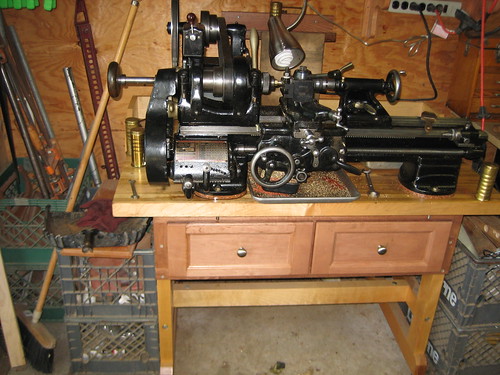So, I want to restore some brushes and have been reading the "how-to" threads and following the various brush restores that are regularly posted. It seems that the most common tools recommended are a hand drill for getting out the old knot after cutting it off with some scissors and a dremel for removing left over epoxy residue, etc. I'm wondering if anyone uses a drill press for one or both of these tasks -- seems like it would be perfect. Just choose a drill bit that matches the diameter of the existent knot hole and clear out the remains of the old knot and bore out the old glue at the same time... Seems like it would be the best tool, also, if you decided to increase the size of a hole to place a larger knot.
Any drill press users out there with restoration tips? Do you drill out the knot the same way I see pictured with a hand drill i.e. multiple small holes, or just put in a large bit and core it out in one cautious motion?
I actually don't own a drill press at the moment, but have had my eye on one for some other projects but haven't been able to really justify it. If it seems like it would be a great tool for this, though, I might have enough small projects to tip me over the edge!
Cheers!
Any drill press users out there with restoration tips? Do you drill out the knot the same way I see pictured with a hand drill i.e. multiple small holes, or just put in a large bit and core it out in one cautious motion?
I actually don't own a drill press at the moment, but have had my eye on one for some other projects but haven't been able to really justify it. If it seems like it would be a great tool for this, though, I might have enough small projects to tip me over the edge!
Cheers!

 , I just used my Dremel. I've only done one so far. It was a new handle, but I needed to deepen the hole, and widen it at the top. I used a relatively small bit, and made multiple holes. I will definitely use a larger bit next time, less work. I was really concerned about messing up the handle, but it went well. There was quite a bit of fine dust, I will also wear a dust mask.
, I just used my Dremel. I've only done one so far. It was a new handle, but I needed to deepen the hole, and widen it at the top. I used a relatively small bit, and made multiple holes. I will definitely use a larger bit next time, less work. I was really concerned about messing up the handle, but it went well. There was quite a bit of fine dust, I will also wear a dust mask.


